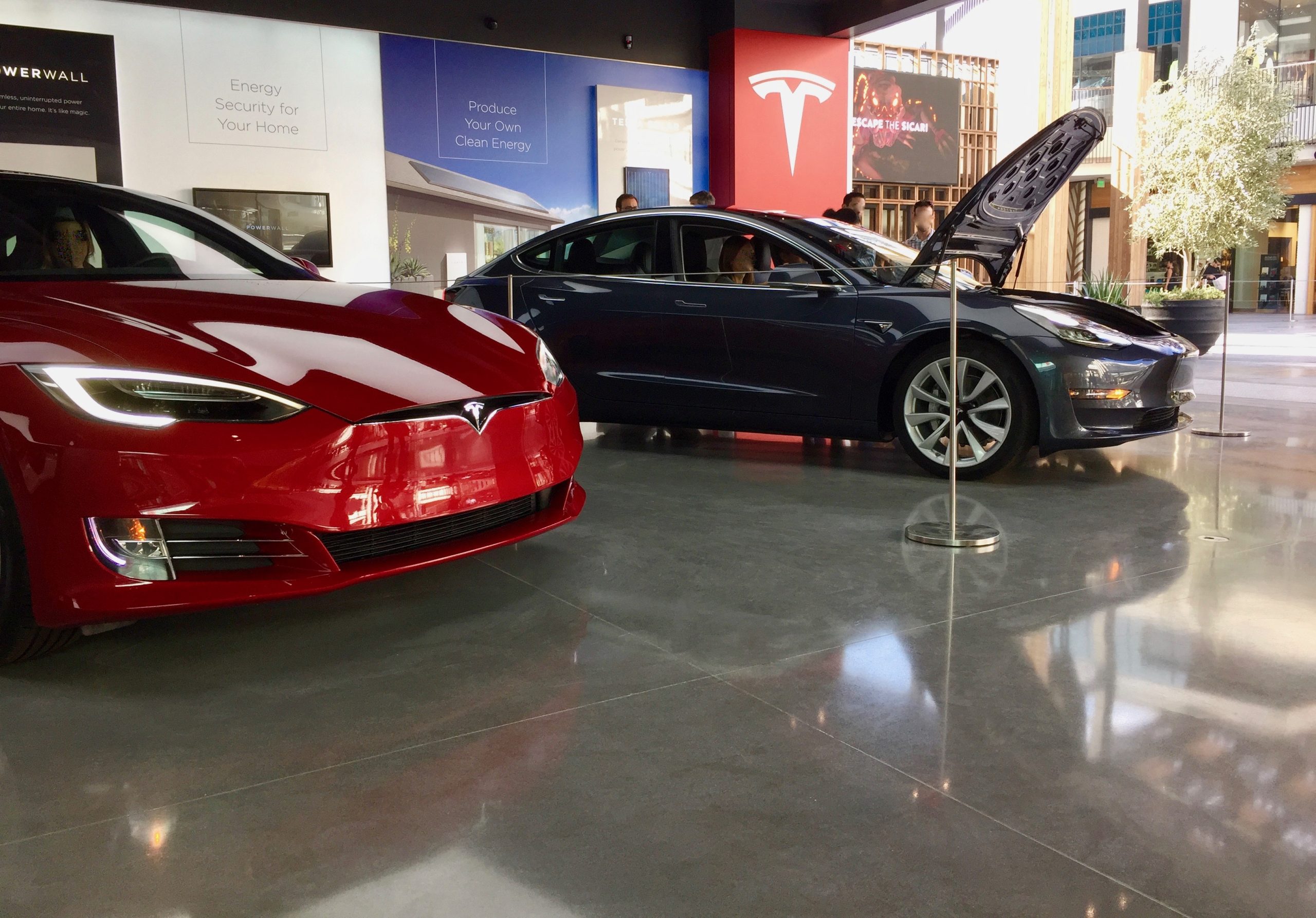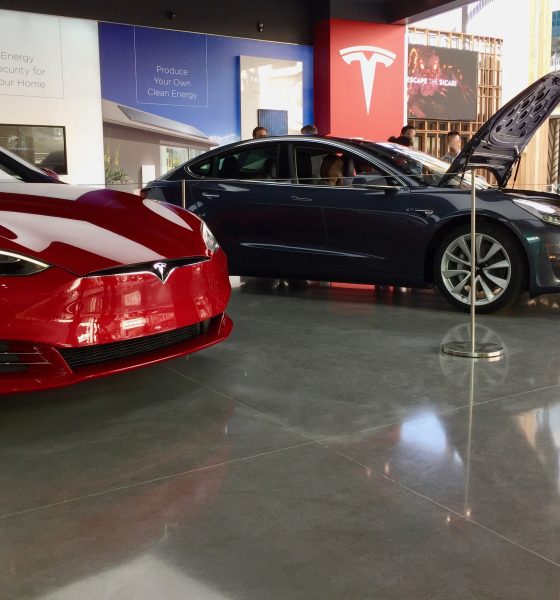

News
Tesla direct sales in New Mexico gains ground as “Tesla Bill” gets approved
A piece of New Mexico state legislation to amend local automotive franchise laws through a “Tesla Bill”, specifically allowing vehicle manufacturers like Tesla to operate as a dealer and sell direct, was approved by the Public Affairs Committee last Thursday.
Similar to other states with dealership protections, car makers wanting to do business in the “Land of Enchantment” must sell their vehicles through a franchise dealership network, and efforts to amend those requirements are always met with significant resistance from lobbyist groups whose members stand to be impacted most. After facing a party-line vote, Democrats ‘for’ and Republicans ‘against’, the law (Senate Bill 243) passed the state’s Public Affairs Committee and advanced to the Corporations and Transportation Committee. After another review and vote, the bill will advance to the Senate floor for a final vote if successful. Given the state’s balance of power – Democrats are in the majority in both houses of the state’s legislature as well as the governorship – Tesla may be well on its way to a full victory in New Mexico.
Prior to the Public Affairs Committee vote, a panel was held wherein advocates both for and against amending the state franchise laws voiced their positions. Overall, supporters (particularly those focused on Tesla’s desire to do business in the state) argued that the bill in question aims to work within the dealership model, not eliminate it. According to Meredith Roberts, senior policy adviser and counsel representing Tesla, “We’re not here to upset (the franchise model)…It’s only additive,” she said in the panel hearing. The language of the bill supports this position via its narrow applicability, allowing direct sales only if the following conditions apply:
- The business does not have any existing franchises in the state.
- The business sells and services only vehicles that it manufactures.
- The vehicles sold must be electric and powered by batteries or fuel cells.

Despite the estimated $4800 tax income New Mexico would gain per average electric vehicle sold, 15-50 new jobs per store opened, and $1 million dollars local economic impact gain from a direct-sales manufacturer like Tesla would bring to the state, those in opposition to the bill maintained that changes to the existing franchise laws would not be beneficial. During the hearing, Charles Henson, president of the New Mexico Automotive Dealers Association, cited the millions of dollars already invested by dealerships, arguing that Tesla’s sales model would create unfair direct manufacturer competition. Another state senator, Jacob Candelaria (D-Albuquerque), likened EV manufacturers’ direct-sales models to giant tech company monopolies. To be fair, with the popularity of the direct-sales model increasing, as all-electric fleets come into being (a stated goal of many current ICE vehicle makers), franchises may end up becoming a thing of the past as the future of clean energy transportation sets in.
While the hand-off from one committee to another is a good step towards the end goal of in-state, brick-and-mortar sales presence for EV manufacturers, the bill still may face an uphill battle despite the political leanings of the state’s legislative majority for reasons outside lobbyist efforts. Specifically, some legislators are a bit put-off by Tesla’s history in New Mexico. A manufacturing plant was announced in 2007 (to be succeeded by the current Fremont factory) and a Gigafactory was teased in 2014 (to be succeeded by the current Sparks, Nevada factory). Since neither of those projects came to fruition within the state, it seems there may be some leftover sour grapes. However, given Tesla’s current inability to do normal sales business in New Mexico, it’s understandable that the all-electric car maker may have based part of their location decisions on their customers’ purchasing abilities in the states where they set up shop, thereby limiting potential liabilities and run-ins with dealership groups. This is something Volvo USA is already experiencing with its company-directed vehicle subscription service.
At this juncture, Tesla is all too familiar with the franchise vs. direct-sales fight. In December last year, a Connecticut judge ruled in favor of Connecticut’s Department of Motor Vehicles on a motion prompted by the Connecticut Automotive Retailers Trade Association (CARA), finding that Tesla’s business activities within the state violated the states automotive franchise law system. The EV company only had one location in the state – a gallery located in Greenwich to inform interested parties about its products, not sell them – but even that was determined to constitute competition and thus banned activity. Legislative efforts to amend Connecticut’s laws by state representatives in favor of Tesla’s sales approach have, thus far, failed. Ironically, Connecticut is also controlled by Democrats in both the legislature and governorship.

News
Tesla FSD fleet is nearing 7 billion total miles, including 2.5 billion city miles
As can be seen on Tesla’s official FSD webpage, vehicles equipped with the system have now navigated over 6.99 billion miles.

Tesla’s Full Self-Driving (Supervised) fleet is closing in on almost 7 billion total miles driven, as per data posted by the company on its official FSD webpage.
These figures hint at the massive scale of data fueling Tesla’s rapid FSD improvements, which have been quite notable as of late.
FSD mileage milestones
As can be seen on Tesla’s official FSD webpage, vehicles equipped with the system have now navigated over 6.99 billion miles. Tesla owner and avid FSD tester Whole Mars Catalog also shared a screenshot indicating that from the nearly 7 billion miles traveled by the FSD fleet, more than 2.5 billion miles were driven inside cities.
City miles are particularly valuable for complex urban scenarios like unprotected turns, pedestrian interactions, and traffic lights. This is also the difference-maker for FSD, as only complex solutions, such as Waymo’s self-driving taxis, operate similarly on inner-city streets. And even then, incidents such as the San Francisco blackouts have proven challenging for sensor-rich vehicles like Waymos.
Tesla’s data edge
Tesla has a number of advantages in the autonomous vehicle sector, one of which is the size of its fleet and the number of vehicles training FSD on real-world roads. Tesla’s nearly 7 billion FSD miles then allow the company to roll out updates that make its vehicles behave like they are being driven by experienced drivers, even if they are operating on their own.
So notable are Tesla’s improvements to FSD that NVIDIA Director of Robotics Jim Fan, after experiencing FSD v14, noted that the system is the first AI that passes what he described as a “Physical Turing Test.”
“Despite knowing exactly how robot learning works, I still find it magical watching the steering wheel turn by itself. First it feels surreal, next it becomes routine. Then, like the smartphone, taking it away actively hurts. This is how humanity gets rewired and glued to god-like technologies,” Fan wrote in a post on X.
News
Tesla starts showing how FSD will change lives in Europe
Local officials tested the system on narrow country roads and were impressed by FSD’s smooth, human-like driving, with some calling the service a game-changer for everyday life in areas that are far from urban centers.

Tesla has launched Europe’s first public shuttle service using Full Self-Driving (Supervised) in the rural Eifelkreis Bitburg-Prüm region of Germany, demonstrating how the technology can restore independence and mobility for people who struggle with limited transport options.
Local officials tested the system on narrow country roads and were impressed by FSD’s smooth, human-like driving, with some calling the service a game-changer for everyday life in areas that are far from urban centers.
Officials see real impact on rural residents
Arzfeld Mayor Johannes Kuhl and District Administrator Andreas Kruppert personally tested the Tesla shuttle service. This allowed them to see just how well FSD navigated winding lanes and rural roads confidently. Kruppert said, “Autonomous driving sounds like science fiction to many, but we simply see here that it works totally well in rural regions too.” Kuhl, for his part, also noted that FSD “feels like a very experienced driver.”
The pilot complements the area’s “Citizen Bus” program, which provides on-demand rides for elderly residents who can no longer drive themselves. Tesla Europe shared a video of a demonstration of the service, highlighting how FSD gives people their freedom back, even in places where public transport is not as prevalent.
What the Ministry for Economic Affairs and Transport says
Rhineland-Palatinate’s Minister Daniela Schmitt supported the project, praising the collaboration that made this “first of its kind in Europe” possible. As per the ministry, the rural rollout for the service shows FSD’s potential beyond major cities, and it delivers tangible benefits like grocery runs, doctor visits, and social connections for isolated residents.
“Reliable and flexible mobility is especially vital in rural areas. With the launch of a shuttle service using self-driving vehicles (FSD supervised) by Tesla in the Eifelkreis Bitburg-Prüm, an innovative pilot project is now getting underway that complements local community bus services. It is the first project of its kind in Europe.
“The result is a real gain for rural mobility: greater accessibility, more flexibility and tangible benefits for everyday life. A strong signal for innovation, cooperation and future-oriented mobility beyond urban centers,” the ministry wrote in a LinkedIn post.
News
Tesla China quietly posts Robotaxi-related job listing
Tesla China is currently seeking a Low Voltage Electrical Engineer to work on circuit board design for the company’s autonomous vehicles.

Tesla has posted a new job listing in Shanghai explicitly tied to its Robotaxi program, fueling speculation that the company is preparing to launch its dedicated autonomous ride-hailing service in China.
As noted in the listing, Tesla China is currently seeking a Low Voltage Electrical Engineer to work on circuit board design for the company’s autonomous vehicles.
Robotaxi-specific role
The listing, which was shared on social media platform X by industry watcher @tslaming, suggested that Tesla China is looking to fill the role urgently. The job listing itself specifically mentions that the person hired for the role will be working on the Low Voltage Hardware team, which would design the circuit boards that would serve as the nervous system of the Robotaxi.
Key tasks for the role, as indicated in the job listing, include collaboration with PCB layout, firmware, mechanical, program management, and validation teams, among other responsibilities. The role is based in Shanghai.
China Robotaxi launch
China represents a massive potential market for robotaxis, with its dense urban centers and supportive policies in select cities. Tesla has limited permission to roll out FSD in the country, though despite this, its vehicles have been hailed as among the best in the market when it comes to autonomous features. So far, at least, it appears that China supports Tesla’s FSD and Robotaxi rollout.
This was hinted at in November, when Tesla brought the Cybercab to the 8th China International Import Expo (CIIE) in Shanghai, marking the first time that the autonomous two-seater was brought to the Asia-Pacific region. The vehicle, despite not having a release date in China, received a significant amount of interest among the event’s attendees.








